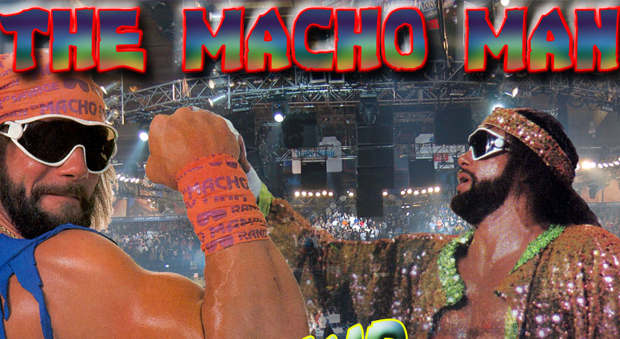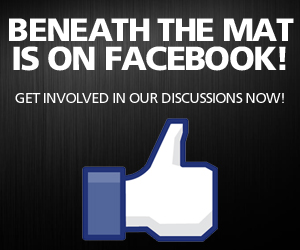Pro wrestling is pretty f*cked up.
I know, I’m not exactly breaking new ground here. Anyone who has followed the industry even somewhat casually over the past 25 years has seen the staggering amount of wrestlers under the age of 50 that have died. The percentage far dwarfs deaths in rock music, movies, and sports, yet for the most part is generally overlooked by the mainstream media, outside of the occasional HBO Sports piece, or newspaper column. The NFL is currently withstanding a firestorm of news regarding safety and concussions in the NFL, after future NFL Hall of Famer Junior Seau committed suicide at the age of 43, and several other similar deaths in part attributed to the effect of a career’s worth of brain injuries. Still, the overwhelming feeling of, “Well, it’s just a wrestling, who cares?” is taken by most of the viewing public, as the sad body count continues to pile up. Even sadder, with many deaths in wrestling these days, they are taken with a sympathetic nod and an “RIP” post on a wrestling newsboard. If the newly deceased wrestler is lucky, they might even get a five second graphic with their picture on it to start RAW or Impact. But for the most part, deaths are so frequent, so regular in wrestling, that most don’t even register as a blip on the news radar.
This was almost a sad piece to even research. It’s tough to view a person’s death as not as important as someone else’s. Still, with the overwhelming number of tragedies in wrestling over the past 25 years, it sadly comes with the territory. The following is a compiled list of the 10 Most Impactful Deaths in pro wrestling, and why their death had such an impact on the wrestling industry and the general public.
AND NOW FOR PART#2
5) “Macho Man” Randy Savage – Heart attack, age 58. May 20, 2011
Despite being largely out of the public eye by the time of his death in May of 2011, Randy Savage’s death touched off a wave of emotion from current and former wrestling fans, as well as a great amount of mainstream media coverage. One of the biggest stars and best performers of the modern era, Savage was one of the few pro wrestlers to make his way into mainstream pop culture. His signature flamboyant costumes and raspy voice led him to be the spokesman for Slim Jim, as well as landed him a role as Bonesaw McGraw in the box office megahit, Spiderman.
Savage’s death is unique on this list, as he was mostly out of the wrestling industry by the time of his death, and his passing didn’t mark any changes in trend, booking, or regulations. What made Randy Savage’s death so impactful was the combination of sadness that it brought to the wrestling industry, as well as the respect and admiration he received from the general public. His death was front page news on ESPN’s website, and feature columnist Bill Simmons dedicated his weekly column that day to the legacy of Randy Savage. ESPN prime time shows Pardon the Interuption and SportsCenter both mentioned Savage’s death, as well as memories they had of him as a performer. CNN covered his death that day as well, and many people who were admittedly not fans of wrestling in general still commented on Facebook and Twitter about the life and times of the Macho Man. He was truly one of a handful of wrestlers who the world outside of the WWE Universe bubble
recognized and remembered, and his placement as one of the all time greats is well cemented.
4) Owen Hart – Injuries from falling from the rafters to the ring, age 34. May 23, 1999
One of the greatest tragedies in the history of the industry, Owen Hart’s horrifying death at WWE’s Over the Edge PPV in 1999 has long been regarded as one of the darkest days in wrestling. Long heralded for his ability in the ring and his family man values outside of it, Owen had performed all over the globe in his 20′s, before settling in the then World Wrestling Federation in the early 90′s. A heel turn against older brother Bret set the stage for one of the greatest matches in WWF history at Wrestlemania X, and Owen had since turned out a solid six years as an upper mid carder. By 1999, his WWF career appeared to be winding down, and Owen had confided to friends that he was strongly considering retirement after his contract was up in two years.
He never made it.
Two years of legal ramifications between Owen’s wife Martha and the WWF ended in a $18 million settlement, which legal experts claimed was the highest settlement amount ever awarded at that time from a wrongful death lawsuit. Martha used this money to start the Owen Hart Foundation, which was perhaps the lone bright spot to come out of this terrible situation. Hart’s death was seen by many as a sign that in the quest for ratings supremacy in the “Monday Night Wars”, perhaps the big bumps and crazy stunts were being taken too far. The next decade slowly brought a safer style to the industry, as softer rings, fewer head chair shots, and a ban on blading became commonplace. Sadly, despite Owen’s lengthy history as a fantastic performer will always be overshadowed by the circumstances of his tragic public death.
3) Eddie Guerrero – Heart attack, age 38. November 13, 2005.
Eddie Guerrero’s 2005 death marks the fourth performer on this list under the age of 60 to die of a heart condition. See a pattern here? Guerrero’s career was marked with a mix of incredible performances and personal demons. Bursting on to the North American scene at the now legendary “When Worlds Collide” PPV in November of 1994, Guerrero soon made a name for himself in ECW and WCW as one of the premier technicians of wrestling. His jump to the WWF in 2000 saw him get himself over as a main event player based on a combination of his in ring ability and goofy charisma. Eddie’s drug and alcohol abuse had gotten him released from the WWF in 2002, but he returned a year later with a renewed resolve, and his career was highlighted by a WWE World Title win over Brock Lesnar in February of 2004. At age 38, he was thought to have reached his peak as an all around performer and personality, and was hailed by many as the ultimate comeback story, an example of a
guy with demons who had battled through them and survived in one piece.
His sudden passing sent shockwaves through the WWE, and Vince McMahon was again left to field questions about how a seemingly healthy 38 year old man would die of a heart attack, and why this condition seemed to be so common in professional wrestling. Shortly after Guerrero’s death, the WWE instituted a new drug testing policy, called “The Wellness Policy” for its performers. This program was not just intended for drug testing, but for cardiovascular and other physical tests to increase safety amongst WWE talent. Six years into the policy, the jury is out with regards to the overall credibility of the program, however it did appear(and was rumored) that several big name talents had stopped taking steroids because of it, a substance that was credited as a factor in Guerrero’s death.
2) Vince McMahon Sr. – Pancreatic cancer, age 69. May 24, 1984.
A second generation promoter, Vince McMahon, Sr. is widely regarded as the founder of the WWE. While learning the business from his father Jess, McMahon Sr. saw the explosion of television into American society in the early 1950′s as a golden opportunity to expand his wrestling promotion. After a profitable decade of promoting in the Northeast, most notably at the world famous Madison Square Garden, McMahon, Sr. broke his Capitol Wrestling Corporation away from the NWA in 1963, and formed the World Wide Wrestling Federation, with Buddy Rogers as his first champion. (WWWF, later called the WWF and WWE) For the next twenty years, the WWWF flourished in the biggest markets in the Northeast, selling out Madison Square Garden over 200 times during that stretch.
McMahon, Sr.’s health had begun to decline in the early 80s, and in 1982 he sold the WWF to his son Vince McMahon and his backing company, Titan Sports, Inc. His selling and subsequent death less than two years later marked the greatest change the wrestling industry had ever seen, as his son soon set out on a path of conquering across the United States and Canada, airing his WWF shows in markets all over the company and taking the WWF from a Northeast staple to a worldwide powerhouse. Like McMahon Sr. himself had seen the advent of the television industry as a strength for wrestling programming, his son had bought the company from him with the vision of using newly used cable television to reach regions all across the company. Vince McMahon, Sr. is highly regarded amongst wrestling historians and past performers as a brilliant promoter and a man of integrity, and his death marked a severe change in the way that wrestling was promoted and televised across the country.
1) Chris Benoit – Suicide by hanging, age 40. June 24, 2007.
Pretty much everything that can be said has been said about the Chris Benoit ordeal. Widely known as one of the greatest in-ring talents in the history of wrestling, it was thought that the legacy of Chris Benoit would be of his talent and drive as a performer and the respect he held among his peers. While no one even today can question his talent as a performer, his respect as a man that was once so high within the industry came crashing down in a way that no one could have ever predicted. On June 25, 2007, after tips from people within WWE, police made a welfare check on Benoit’s suburban Georgia home, only to find the horrifying scene of Benoit, his wife Nancy, and seven year old son Daniel all dead. This happened on a Monday, and without all of the facts and reports made public yet, WWE dedicated that evening’s Monday Night Raw show to Chris Benoit. As the show was being broadcast, it was soon made apparent that this case was beyond the worst possible scenario thought of by the company. The next afternoon, police made public with the fact that Chris Benoit, wrestling icon and former WWE World Champion, had murdered his wife and son before hanging himself from a piece of his gym equipment.
The media reaction to this was swift and devastating. It was soon revealed that Benoit had purchased a large amount of steroids and testosterone in the last two years of his life, which seemingly went against the WWE Wellness Policy, which Benoit had never failed a test for. For the next several weeks, the wrestling industry came under fire in a way it had never faced before. Countless talk shows, CNN programs, and other news pieces discussed drugs in wrestling, the safety of the industry, and thought provoking questions about the lack of benefits, unions, and general decency of the way talent was treated. WWE quickly went on the defensive, quickly writing on their website that of course there was no way that steroids could have played a part in Benoit’s actions. Benoit’s brain was sent to Dr. Julian Bailes, the head of neurosurgery at West Virginia University, who concluded that Benoit had the brain of an 85 year old Alzheimer’s patient, the result of years of suplexes, headbutts, and chairshots.
Benoit was quickly erased from WWE history in a manner not seen before. He has not been mentioned or seen in any highlights package on WWE television since the murders became public, and is regarded as a taboo topic within the industry. Even worse, his actions ended the lives of two innocent people in as horrific a manner as one can imagine, and this is widely regarded as the worst incident in the history of professional wrestling. the policy, the jury is out with regards to the overall credibility of the program, however it did appear(and was rumored) that several big name talents had stopped taking steroids because of it, a substance that was credited as a factor in Guerrero’s death.

















Jeff pisze:I don’t think it is the wtesrlers fault WWE sucks right now. I think it is the fact that these wtesrlers are not given time to develop like they where years ago. With the same writing staff writing for every wrestler they are not given a chance to display and build on there on uniqueness and personality. They all end up taking on the same boring personality of the writing staff. HBK was able to have control for the most part over his character this past year and look at the job he did. Hey Vince let these wtesrlers become individuals and not corporate drones. ass clown